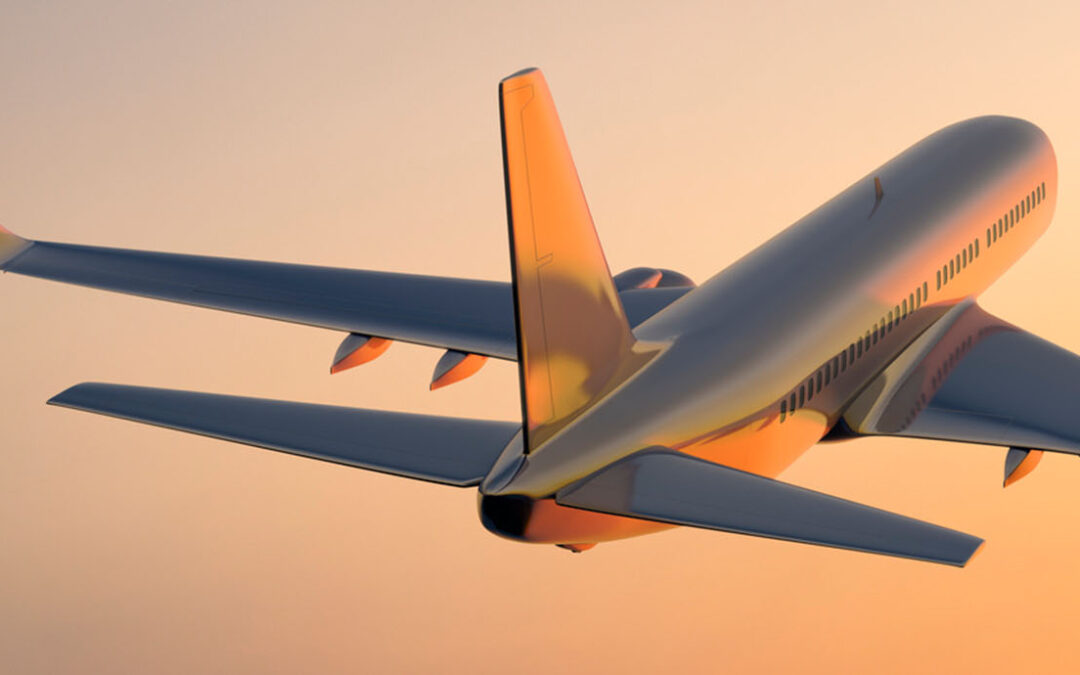
by NMG Aerospace | Oct 9, 2023 | Uncategorized
Importance of Manufacturing Experience
When it comes to large-scale production for a critical industry, such as aerospace, there’s simply no replacement for manufacturing experience. Excellent manufacturing is a product of efficiency, quality, and the ability to accommodate highly specific needs. These valuable traits are the product of many years of honing and streamlining processes, from the ramp-up period to final quality assurance.
Many aerospace companies don’t have the luxury of waiting around for a manufacturer to fix a mistake or figure out a plan for a complex project. Experienced manufacturers can leverage their long track records and deep knowledge to ensure maximum efficiency at every stage and deliver a finished product that matches spec, every time.
NMG’s Aerospace Engineering Experience
NMG has been providing excellent aerospace engineering services and supporting the aerospace industry since 1967. For over fifty years, we’ve played a critical role in the evolution and advancement of aerospace and aircraft technology by solving complex aerospace engineering services for our valued customers. We take great pride in crafting better aircraft components by leveraging our aerospace engineering expertise to make systems more efficient and effective. Whether we’re finding a way to fit a complex system into a limited space, increase the reliability of a critical safety component, or design a new and improved manufacturing process, NMG is determined to meet our customers’ needs and get it right the first time, every time.
How Experience Affects Aerospace Manufacturing Today
Working with an experienced aerospace manufacturer benefits customers in a few key ways, ranging from deep perspective to faster execution of critical manufacturing stages:
Deep Industry Knowledge
While a reputable manufacturer won’t share anything that violates the intellectual property of another client, experienced manufacturers do have the wisdom of many years to offer. An experienced aerospace manufacturer can give advice based on the successes, setbacks, and advancements they’ve witnessed during their long tenure in the aerospace industry. This educated perspective can be a tremendous advantage, especially when exploring new ideas.
Faster Ramp Up Times
Experienced manufacturers need less time than their greener counterparts to get ramped up for a new project and start production. Because they’ve completed so many successful projects, they can draw on their past manufacturing experience when devising and executing a ramp-up plan, rather than having to start from scratch every time. This can significantly shorten the overall timeline of the project.
Able to Meet Demand
Experienced aerospace manufacturers often have greater capacity and flexibility to offer, as well as the ability to accommodate specific, even unusual, needs. Because they’ve spent so many years expanding their capabilities and executing a wide range of projects, they can meet demand for complex specs and large orders.
Ensure Product Meets Specifications
Experienced manufacturers are well versed in the rigorous standards and specifications of the aerospace industry, set by both regulatory bodies and other manufacturers, and can help their customers meet those high expectations.
Experienced Quality Aerospace Manufacturing With NMG
NMG Aerospace has been in the aerospace manufacturing and design business for decades. During that time, we’ve honed virtually all of our processes to ensure smoother operations, better quality, and maximum efficiency, so we can get it right the first time, every time. We can meet demand, even under unusual or urgent circumstances, faster than the competition, so we can keep your project moving forward and get you exactly what you need.
To learn more about our manufacturing experience, our approach, and how we can support even your most complex projects, talk to a member of our team >

by NMG Aerospace | Oct 8, 2023 | Uncategorized
What Is NADCAP?
NADCAP is short for National Aerospace and Defense Contractors Accreditation Program. NADCAP is a conformity and quality assessment developed to ensure quality in aerospace manufacturing.
Before NADCAP, suppliers had to undergo audits for every single aerospace customer they wanted to work with. This proved to be expensive and time-consuming, not to mention redundant. Many major aerospace manufacturers had similar criteria regarding process and quality and were performing near-identical audits.
The solution was NADCAP. Proposed in 1989 and passed in 1990, NADCAP created a single, standardized audit that most aerospace customers deem rigorous enough to meet their exacting standards. Now, undergoing a NADCAP audit opens the door for suppliers to work with many different aerospace customers.
Purpose of NADCAP Welding Standards
Aerospace products are expected to perform under rigorous conditions and in extreme environments, requiring a different approach to accreditation than consumer or even industrial products. The purpose of NADCAP welding standards is to establish that all aerospace welding processes and procedures conform to a defined set of expectations. This has several key benefits for aerospace suppliers, manufacturers, and other industry participants.
Consistency
While many regulatory and accreditation bodies conduct audits based on final product quality, NADCAP conducts audits of processes. Every step of the aerospace welding process, from the way the welder receives the work order to final product delivery, is closely inspected by an experienced auditor to ensure that expectations are met. Some of the processes reviewed during a NADCAP audit include:
- Material sourcing, purchasing, and allocation.
- Outsourcing.
- Documentation.
- Equipment maintenance and use.
- Operator practices.
Focusing on best practices throughout the process leads to superior quality at the final product stage.
Meets Safety Standards
By reviewing processes rather than the final product, NADCAP audits can uncover opportunities to improve worker safety. NADCAP welding standards are built around safety best practices, allowing auditors to support suppliers in improving their safety practices and protecting their workers.
Highlights Opportunities for Improvement
Preparing for an audit can be a little stressful, but every audit presents an opportunity to make improvements. NADCAP auditors will provide feedback and guidance regarding areas for improvement, giving suppliers the opportunity to establish better aerospace welding practices and reap the benefits.
Increase Market Visibility
Many aerospace companies and customers will only work with suppliers that have achieved NADCAP accreditation. Passing a NADCAP audit makes suppliers more visible to potential customers, creating more opportunities to do business.
NADCAP Certification Process
The NADCAP accreditation process differs slightly depending on the process for which you are seeking accreditation. Separate audits are required for each service area. However, most audit processes follow the same general format:
- The supplier requests the audit. Usually, they will receive a hefty packet of information about what to expect and how to prepare for the audit.
- The audit is scheduled, and an auditor is assigned.
- The auditor performs the audit and writes and submits their report.
- If the auditor notices and reports any issues, the supplier has a chance to make corrections and respond.
- The accreditation body reviews the report and the supplier’s responses. Once the accreditation body is satisfied that all issues have been corrected, the report goes to a task group for review.
- The supplier receives their NADCAP accreditation.
NADCAP accreditations must be renewed every 12 months.
Quality Aerospace Manufacturing & NADCAP Welding from NMG
NMG is proud to have achieved NADCAP accreditation for aerospace welding. We specialize in welding, torch, and induction brazing for high-performance aerospace parts and components. Our experts have mastered the best practices established by NADCAP welding standards, and we’re constantly improving our processes thanks to our institutional dedication to lean manufacturing.
Our aerospace welding capabilities are supplemented by a robust portfolio of other aerospace manufacturing capabilities and many years of experience.
To learn more about our aerospace welding capabilities, talk to a member of our team >
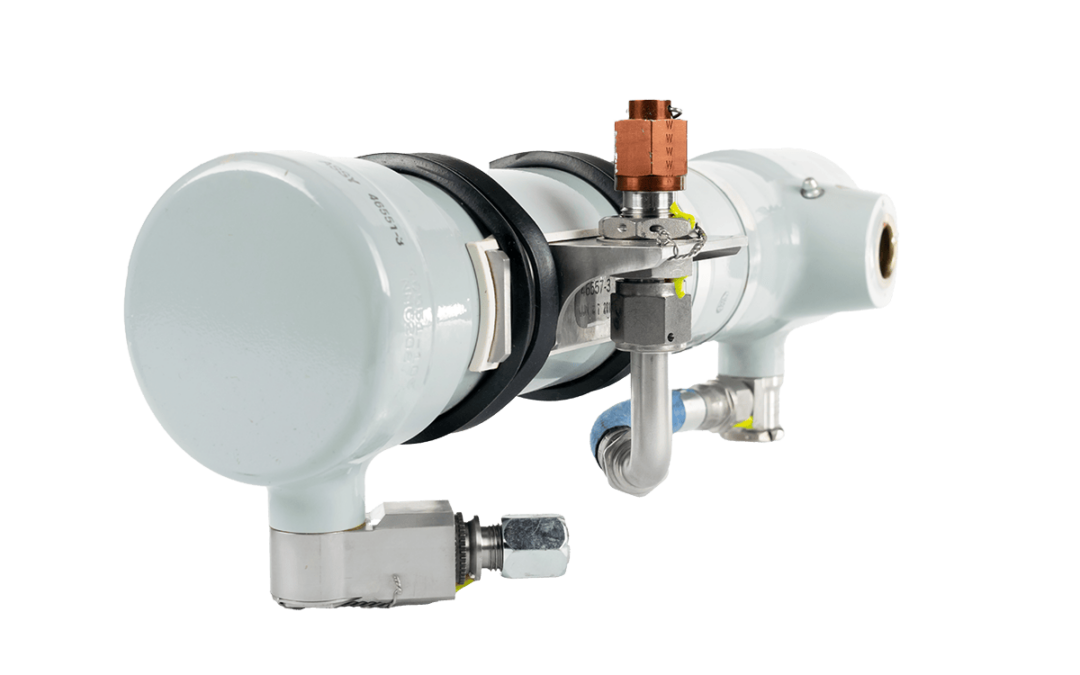
by NMG Aerospace | Sep 3, 2023 | Uncategorized
What Is an Aerospace Actuator?
An actuator is a device or component that converts power into motion. Actuators come in a tremendous range of sizes and functions and can convert power into pressure, temperature, and mechanical movements. Each type of actuator works a little differently, depending on the medium used to generate force, such as compressed air, pressurized fluid, electricity, and rotary motion. The role of the actuator is to convert that power into motion or force.
An aerospace actuator is, quite simply, an actuator that performs these functions in an aerospace environment, usually onboard an aircraft. Aerospace actuators are among the most important components aboard an aircraft, triggering trigger functions as simple as opening or closing a valve or as complex as lowering the aircraft’s landing gear. Actuators play a critical role in the reliable function of engine turbines, autopilot systems, and other large assemblies and systems.
Types of Aircraft Actuators
There are several types of aerospace actuators already in heavy use, and new varieties are currently in development. Here are the most common types of actuators seen in the aerospace industry.
Linear Actuators
Linear actuators convert rotary motion into linear motion and are among the most common types of aircraft actuators. They can push, pull, and hold components of all sizes with more power, speed, and precision than the human body alone is capable of. As a result, linear actuators have many applications throughout an aircraft. Common examples include:
- Engaging and retracting aircraft landing gear.
- Engaging the aircraft’s wing flaps.
- Controlling reverse thrust functions.
Hydraulic Actuators
Hydraulic actuators use fluids to generate power, force, and torque. Hydraulic actuators are extremely powerful and can generate immense amounts of force while weighing relatively little and without taking up too much space, making them an excellent choice for high-force applications.
Hydraulic actuators offer several other key advantages. Hydraulic actuators don’t use any electricity and are easy to maintain compared to some other types of aircraft actuators. They can also be engaged very quickly, which is advantageous in many circumstances.
Applications for hydraulic actuators include:
- Aircraft landing gear.
- Wheel brakes.
- Constant-speed propellers.
Solenoid Actuators
Solenoid actuators convert electrical energy into mechanical action via the use of electromagnetics. Wire is coiled tightly around an iron core with a ferromagnetic plunger. Running an electrical current through the coil generates a magnetic field, which triggers the movement of the plunger.
Solenoid actuators operate quickly and can be easier to install than some other types of aircraft actuators. Solenoid actuators are utilized throughout the aircraft for a wide variety of applications, including:
- Starting aircraft engines.
- Deicing systems.
- Evacuation systems.
- Opening and closing of valves to control the flow of fluid and air in fuel metering units, engine control systems, and environmental control systems.
Aerospace Actuators From NMG
NMG Aerospace has years of experience designing and manufacturing aerospace actuators for a wide range of applications throughout the aircraft. In 2016, we made the strategic decision to acquire Electromotive Inc. to expand and deepen our in-house expertise on aerospace actuators and actuation technology.
With our extensive knowledge of aircraft assemblies and systems that rely on actuators to operate, we offer tremendous insight into the design and production process and can help our customers develop reliable systems from nosecone to tail. Our actuator manufacturing, assembly, and testing facilities can withstand pressures up to 10,000 psi, so we can handle robust assemblies and projects.
To learn more about our aerospace actuator manufacturing and design capabilities, talk to a member of our team >
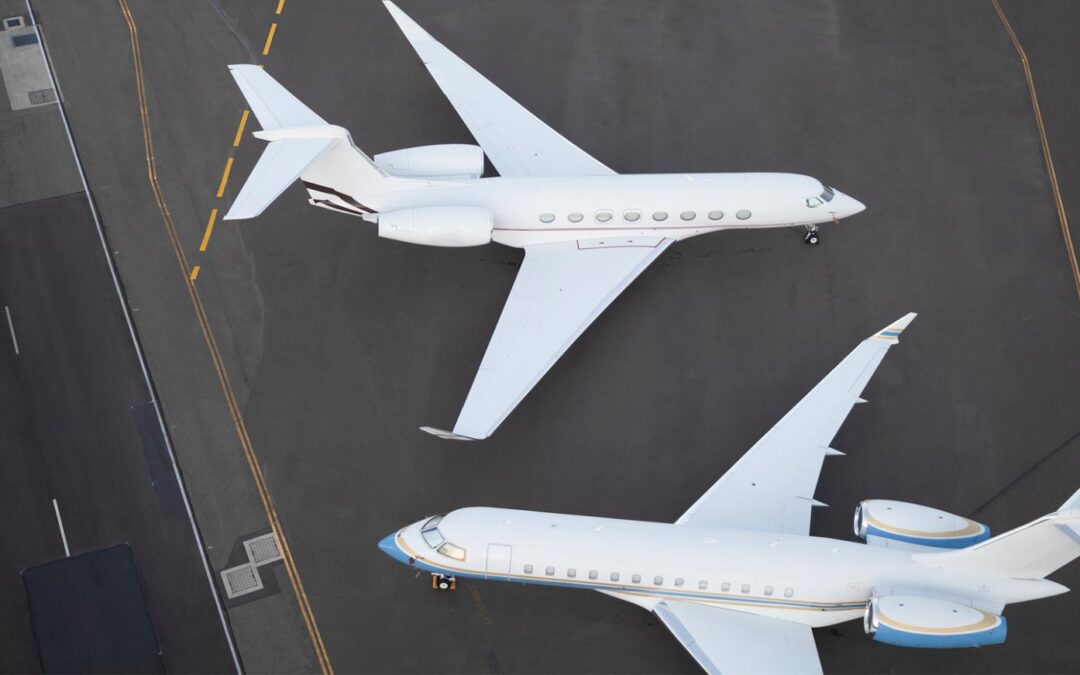
by NMG Aerospace | Aug 24, 2023 | Uncategorized
What is Aerospace Engineering?
The field of engineering is dedicated to using math and science together to solve problems, design creative solutions, and make products, systems, and processes better. Aerospace engineering focuses these activities on aircraft. Aerospace engineering touches virtually every part and every system of the aircraft, from the mechanisms that keep the plane aloft to systems that move potable water from one tank to another.
An aerospace engineering project may be driven by any of a number of goals: designing a new product, solving a recurring problem, finding an alternative that saves money, making an existing product more compact for a tight fit, and more. The applications for aerospace engineering are virtually unlimited.
What are Upcoming Aerospace Trends?
Many things about the aerospace industry are changing, driven by both consumer and industry interests.
Overall interest in space travel is growing. For years, the only major players were NASA and SpaceX, but many smaller, private companies are starting to announce their own plans for outer space activities. Manufacturing, solar power, and tourism are just a few industries that are expanding beyond earth’s atmosphere.
Advanced air mobility (AAM) is becoming a hot topic in many circles. AAM refers to any activity that incorporates aerospace technology into areas and industries that didn’t leverage it. This might include urban transportation and public services, cargo transportation, and more.
Demand for sustainable practices is growing in both B2B and B2C sectors of the aerospace industry. Consumers and manufacturers alike are calling for lower emissions, more sustainable aerospace manufacturing solutions, recyclable material usage, and more.
What Sort of Work do Aerospace Engineers Do?
Aerospace engineers have many career paths to choose from, given the versatility of their skillset. An aerospace engineer may design aircraft and spacecraft parts, components, and systems. They may work in drafting and build blueprints and technical schematics. They may choose more of a leadership role, guiding teams of other engineers and support stuff. They may pivot to sales or business development and work directly with customers. They may teach future aerospace engineers in a college or university setting as a professor. Because aerospace engineering is such a diverse field, professionals with a wide range of interests and personality types can find satisfying careers.
NMG’s Most Frequently Asked Questions
How Does NMG Ensure Quality Processes?
Every single member of the NMG Aerospace team undergoes intensive training in lean manufacturing, so we share a unified vision for continuous improvement. As a result, we’re always working together to ensure quality and consistency, and we’ve spent years fine tuning all of our systems to be as efficient and reliable as possible. This is an internally motivated commitment, one that we adhere to for every job, alongside any specific requests from our customers.
We also work closely with our clients to learn about their own quality commitments and expectations. We tweak our processes and put extra guardrails in place as necessary based on what they ask for, and we check in regularly to make sure we’re on the same page.
Does NMG Aerospace Focus on Sustainability?
Yes, NMG is always exploring new ways to improve the sustainability of our operations. Here are a few of our current practices:
- Material recycling and reduction. We strive to recycle metal chips, rejected parts, and other material scraps whenever possible. We also place smaller stock orders, so there’s less material leftover at the end of every aerospace manufacturing project, and we always try to rework a part before discarding it.
- Better facility practices. We’ve made a few changes to the way our aerospace manufacturing facilities operate to lower our carbon footprint. Lots of our lights turn off automatically, and we’re exploring ways to cut down on water usage. There’s always room for improvement in this area, and we’re dedicated to continuous investigation of changes we can implement right here.
- More efficient packaging. We have a lot of strategies for ensuring right-size packaging for every order, so we’re not shipping everything in oversized boxes or crates that require more material than necessary.
Can NMG Aerospace take over existing orders with other manufacturers?
Yes, we have a strong track record of this. Here are two examples:
- NMG and a second supplier were working simultaneously to make a part. The second supplier suffered a setback. NMG had the foresight to prepare for the possibility of absorbing whatever work the second supplier couldn’t complete and thus was able to take over right away.
- NMG retrofitted an entire fleet of business aircraft with new parts after the first iteration, manufactured by a different supplier, failed to meet expectations.
Read more examples here.
Aerospace Manufacturing & Engineering From NMG
If you have other questions about aerospace manufacturing and aerospace engineering, talk to NMG Aerospace. We’ve been in the aerospace manufacturing business for decades, so you can count on us to offer the expertise, perspective, and guidance you’re looking for. Whether you’re working on a brand new project, hoping to make improvements on an existing product, or seeking help with a challenge, we can help.
Talk to a member of our team >
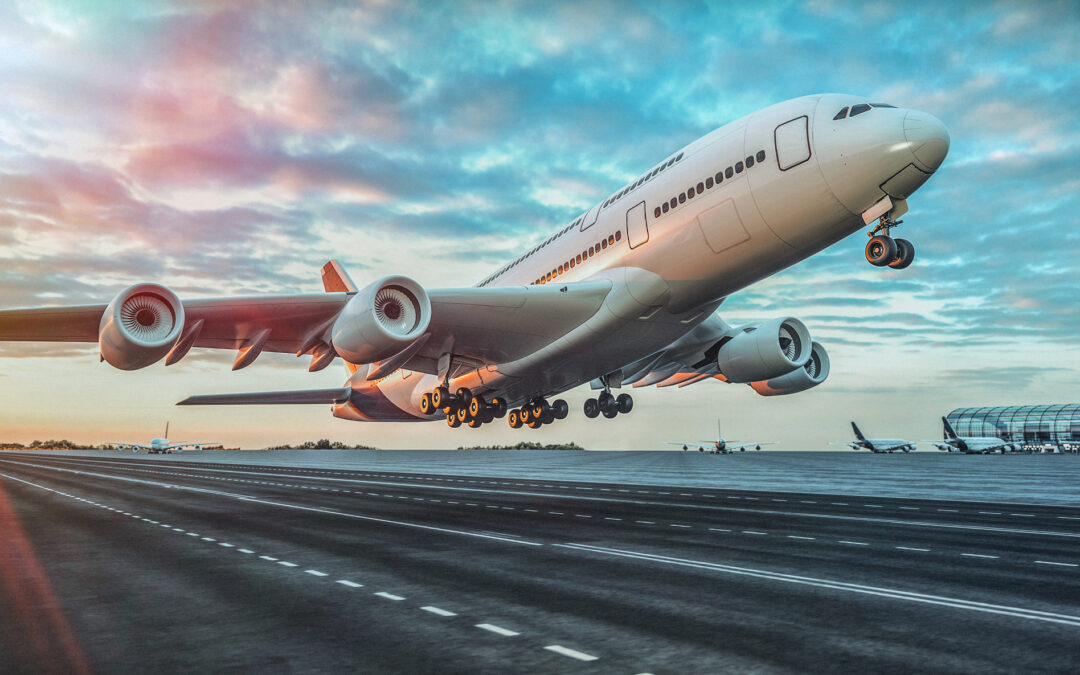
by NMG Aerospace | Aug 11, 2023 | Uncategorized
Understanding the Impact of The Aerospace Industry & the Environment
From major aircraft manufacturers to smaller supplies, virtually every branch of the aerospace industry is exploring sustainability and sustainable alternatives to common practices and materials. Many of the big names—Pratt & Whitney, Boeing, Airbus, Kaiser—have made public announcements about their sustainability initiatives and promises as they work to create more sustainable aircraft. And lots of smaller players are following suit.
Because the industry is so diverse and far-reaching, aerospace companies are pursuing many different strategies for sustainability and eco-consciousness. Some areas being explored include:
- Energy consumption. Aerospace manufacturers are reducing energy consumption in manufacturing and developing aircraft that consume less fuel or utilize more sustainable energy sources.
- Water consumption. Many sectors are exploring new manufacturing techniques that consume less fresh water.
- Waste reduction. Efficient manufacturing practices and strategic buying can result in less waste of materials and unused components. Additionally, aerospace manufacturers are experimenting with both recycled materials and closed-loop recycling systems.
- CO2 emissions. Many aerospace companies are leveraging the above strategies and others to decrease their carbon footprint or work toward carbon neutrality.
- Material selection. Many aircraft and component manufacturers are phasing out hazardous materials that may pose a threat to the environment. In the aerospace industry, more than 1,700 materials are subject to regulatory oversight. Initiatives such as the Restriction of Hazardous Substances Directive (RoHS) and the Registration, Evaluation, Authorisation and Restriction of Chemicals (REACh) play a vital role in this shift.
Sustainability is also being lauded as a sign of innovation and smart business. Bjorn Hansen, Executive Director of The European Chemicals Agency (ECHA), has stated, “It’s clear that the most innovative companies are those that have adopted a green mindset.”
How NMG Reduces Waste & Pollution
At NMG Aerospace, sustainability and conservation are important to us. We’ve initiated a number of sustainable practices at our manufacturing facilities, and we’re always investigating ways to take our green approach to the next level. Here are a few things we do to play our part:
Reducing and Recycling Materials
Material waste can be a major challenge in the world of manufacturing. That’s why we strive to recycle as much as we possibly can. This includes plastic materials and machining debris, such as metal chips or rejected parts. We also buy smaller stock for machining aerospace components so we can reduce waste overall. Whenever possible, we rework parts rather than throwing them out.
Better Facility Practices
In addition to better material management and recycling, we’ve also adopted many basic practices to cut down on energy consumption and carbon output in our own buildings and facilities. For example, all of our lights are programmed to turn off automatically, so not a single bulb is left burning longer than necessary. Small steps like this add up over time, which is why we never hesitate to adopt even the most minor adjustment to make our business more sustainable.
More Efficient Packaging
Anyone who has ever ordered something online is familiar with the phenomenon of an oversized box with a single, comically small item inside. While this may be amusing, it’s an environmental error for several reasons. First, oversized packaging requires the consumption of substantially more material than is necessary. Second, shipping an oversized package drives up our collective shipping carbon footprint.
NMG is committed to right-sized packaging for every shipment, so we can use our shipping materials more efficiently and reduce our shipping carbon footprint.
Our Commitment to Sustainable Manufacturing Practices
With over 40 years of experience, NMG has played a long-standing role in the aerospace industry’s ongoing journey toward greater sustainability. From our on-site initiatives to our manufacturing practices, we’re proud to support our customers as they strive to build a more sustainable aircraft.
To learn more about sustainable aerospace component manufacturing and what we do at NMG, talk to a member of our team >
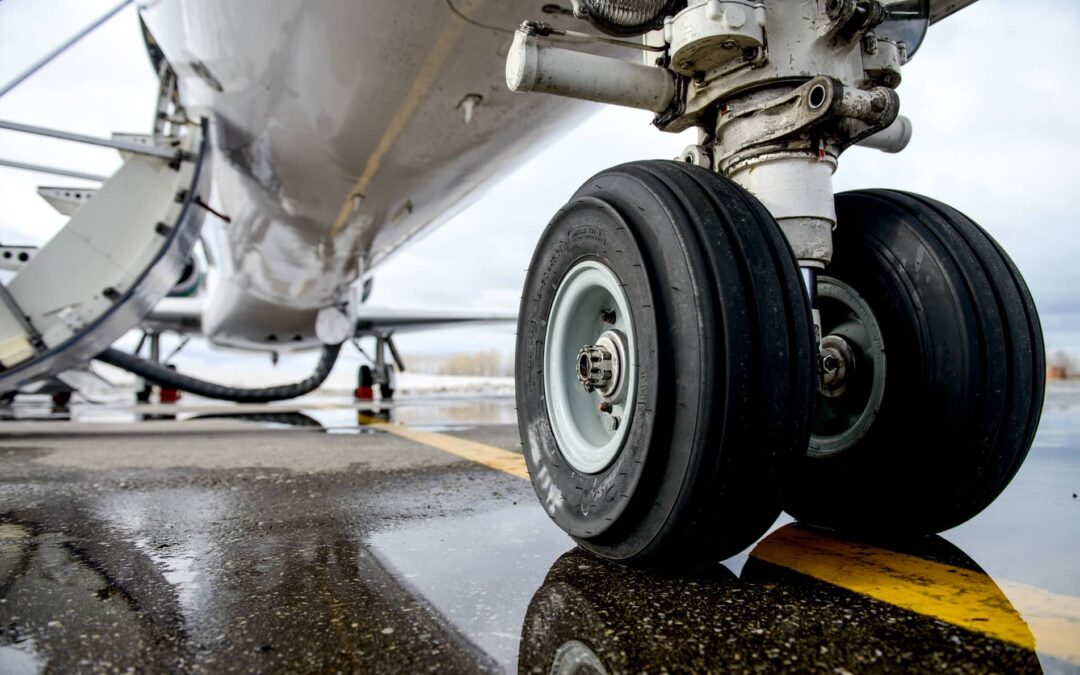
by NMG Aerospace | Jul 31, 2023 | Uncategorized
How Manufacturing Partnerships Are Beneficial
Aerospace manufacturing partnerships offer a wide range of significant benefits and advantages to aircraft manufacturers, tier suppliers, and specialized service providers.
Major aircraft manufacturers who outsource multiple steps to a single partner reap the benefits of greater efficiency. There is no need to coordinate transportation to multiple facilities, no excess risk of supply chain disruptions or delays, and none of the stress associated with coordinating communication and logistics with multiple parties. Some manufacturing partnerships can even incorporate automated ordering mechanisms, cutting down on the administrative hours required to manage the partnership and further increasing efficiency for the aircraft manufacturer.
A truly exceptional manufacturing partner can also offer insight to improve product design and make the manufacturing process easier and less expensive. Experienced aerospace manufacturers can leverage their many years of manufacturing experience to identify opportunities for improvement, greater efficiency, and cost savings.
Collaborations in manufacturing can serve as a failsafe or backup as well. If an aircraft manufacturer experiences a delay or other issue in house, they can quickly outsource production to their aerospace manufacturing partner, minimizing any disruption or slowdown. An aerospace manufacturing partner may also be able to find a timely solution if another supplier failed to complete a project on time or without defects.
How NMG Collaborates With Others
NMG Aerospace is proud to have a rich history of supporting our customers in times of need and developing collaborative partnerships that resulted in streamlined production, cost savings, and reduced administrative headache. Here are several noteworthy examples.
- NMG spent several years performing subcomponent machining for a major Tier 1 aircraft systems manufacturer for the Lockheed Martin F-35 Lightning II. The manufacturer eventually entrusted NMG with not only machining, but also assembly and testing. NMG has also advised the manufacturer on nearly 200 separate occasions on design refinements that have resulted in better manufacturability, so certain parts became easier and less expensive to produce. NMG has become a vital and trusted partner to this particular manufacturer.
- A major Tier 1 aircraft systems manufacturer engaged both NMG and a second supplier to make a particular part for a high performance aircraft platform. NMG had the foresight to create a contingency plan in the event that the second supplier was unable to fulfill the contract for the customer. The second supplier did, in fact, suffer a setback, and since NMG already had the raw materials on hand to serve as a backup, we were able to jump into motion immediately and ensure that our customer got what they needed in a timely manner.
- A major business aircraft manufacturer approached NMG to retrofit an entire fleet to address a failing part designed and manufactured by a previous supplier. NMG has refined the design and the manufacturability of the part, well within the lead time requested by the manufacturer.
- A major aerospace machining supplier won an orifice support tube manufacturing contract a few years ago, only to discover that the parts are very difficult to reliably produce. The supplier turned to NMG for support and wound up outsourcing the entire project to NMG, who now produces the part for the supplier’s customer on the supplier’s behalf.
Engineering Quality Products With NMG
NMG Aerospace is proud to partner with major aircraft and aerospace manufacturers to support their product development innovation goals and offer critical problem-solving support when things don’t go according to plan. From cost-saving design consulting to flexible manufacturing capabilities and capacity, NMG has a proven track record of making a meaningful difference for our customers. We can offer both subject matter expertise and smooth collaboration to deliver a streamlined experience for our customers, their customers, and the aerospace industry as a whole.
To discuss a possible collaboration or project with NMG, talk to a member of our team >

by NMG Aerospace | Jul 10, 2023 | Uncategorized
How Aerospace Manufacturers are Managing Aerospace Industry Growth
The aerospace industry has experienced some significant ups and downs in recent years. In the decade leading up to 2020, the aerospace industry experienced continuous growth, peaking around 2018. However, the advent of the COVID-19 pandemic led to the worst downturn in the history of manned flight. Virtually every part of the industry, from airlines to aircraft manufacturers, suffered.
Now, in 2023, the industry is back on a strong upward trajectory, as people return to air travel in droves. Numerous factors are contributing to aerospace industry growth, and the aerospace manufacturing sector may be poised to make it possible.
Why is the Aerospace Industry Growing?
End of Covid Pandemic
Throughout the COVID-19 pandemic, travel restrictions and border closures led to a dramatic reduction in both international and domestic flights. Some experts say that international flight volume decreased by as much as 68%, while domestic flights dropped by 40%. Aerospace and aircraft manufacturers experienced major downturns as a result.
While some countries are still refusing or restricting entry to unvaccinated individuals, virtually all other travel restrictions have long since been lifted. Business travel remains a bit muted, but leisure travel has made a booming return.
Advancing Military Technology
According to Deloitte, the defense segment of the aerospace industry is stable and on track to outperform commercial in the coming years. Technological advancement is an evergreen priority of many branches of the military, but the Russian invasion of Ukraine has prompted a worldwide bolstering of defense budgets and heightened demand for equipment. The United States and many European countries have reportedly budgeted a total of $204 billion to modernize their militaries, which could very well lead to a wealth of advancements and breakthroughs and meaningful industry growth.
Renewed Interest in Space Travel
Another major contributor to aerospace industry growth is growing interest in space travel. NASA and SpaceX have been the primary players for a while, but plenty of private companies and startups are beginning to venture into space travel. We set a new record for orbital launches in 2022, and countless small satellites are launched on a regular basis.
This is partially driven by growing interest in both establishing new industries in space and expanding existing industries toward the stars. Examples include space-based manufacturing and solar power, asteroid mining, and space tourism.
Another contributing factor is the growing interest in reusable launch vehicles. Both NASA and SpaceX have experimented and achieved success with reusable assets, and more advancements are likely on the horizon.
What Aerospace Industry Growth Means for Aerospace Component Manufacturers
Aerospace component manufacturers have the potential to reap tremendous benefits if they leverage this season of aerospace industry growth effectively. This requires a few key strategies:
- Offer supply chain visibility and resilience. After the supply chain disruptions that accompanied the COVID-19 pandemic, the aerospace industry is eager for stability and predictability throughout the aerospace manufacturing supply chain. According to the United States Department of Defense, aerospace component manufacturers should strive to be as reliable and transparent as possible, to soothe the anxieties of customers and ensure an increase in on-time deliveries.
- Offer flexibility and agility without sacrificing quality. Aerospace technology is advancing very quickly, and aircraft manufacturers are working hard to keep up. Aerospace component manufacturers can serve their customers by building in-house processes that allow them to turn on a dime and make fast changes while still delivering top-quality components.
- Be diligent about hiring and retention. Many manufacturing sectors are struggling with the ramifications of an older workforce and the challenge of hiring and keeping good talent. Aerospace component manufacturers should invest meaningfully in growing and nurturing excellent teams in every part of their business, so they are at the ready to meet their customers’ increasingly frequent staffing and shortages driven needs.
How NMG is Prepared to Meet Growing Industry Demands
NMG Aerospace has been part of the aerospace industry since 1967. We’ve supported our clients through many seasons of growth and struggle, earning their trust as a reliable manufacturing partner regardless of the state of the industry. As a result, we are fully equipped and ready to accommodate the opportunities, demands, and challenges that accompany seasons of tremendous growth.
All of our aerospace machining and manufacturing facilities are located on American soil, so we can contribute to our clients’ desire for stability in the supply chain. We place a high value on transparency and communication, so we’re always clear on exactly what our clients need, and our clients are never left wondering about the status or timeline of a given product. And thanks to our company-wide commitment to lean manufacturing processes, NMG is extremely agile and can adapt to big changes without wavering on our quality promise.
If you’re looking for a trusted domestic manufacturer of high-quality aerospace components with decades of experience in the industry, talk to the team at NMG >
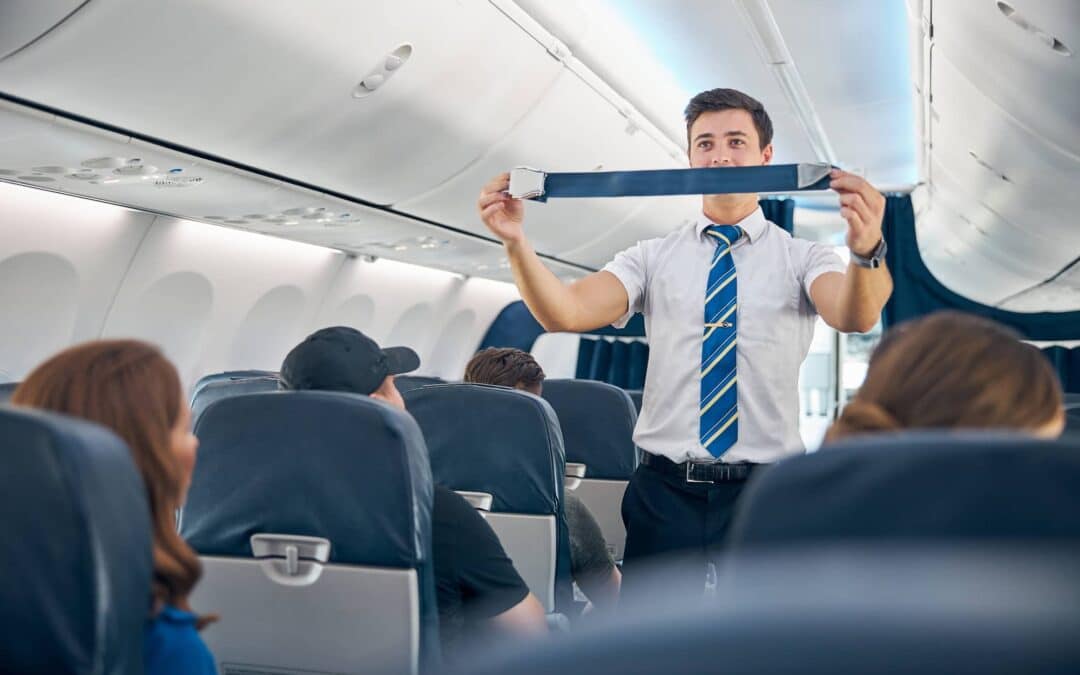
by NMG Aerospace | Jul 9, 2023 | Uncategorized
NMG’s Commitment to Aircraft Safety
At NMG Aerospace, safety is part of our DNA. We understand the paramount importance of safety in the aerospace industry and are committed to upholding the highest aviation safety standards for every component we manufacture. NMG is well versed in a wide range of aviation safety regulations and industry standards bodies, including:
- Federal Aviation Regulations (FAR)
- The AS 91XX family of standards
- ASTM
- Boeing Material Specifications (BMS)
- Military (MIL) specifications
Our dedication to aviation safety goes above and beyond these aerospace quality standards. NMG proves out each and every one of our processes to ensure that the final product always meets the client’s exact specifications and safety expectations—and we never waver from those proven processes. We understand that consistency leads to quality, and quality leads to safety. We execute every aerospace manufacturing process exactly as planned, with no variability, so our clients can count on consistency every time.
In other words, the only thing more exacting than our clients’ standards are our own.
Contributions to Aircraft and Aerospace Safety
Wheels
NMG offers nondestructive testing for every aircraft wheel we manufacture, to ensure that each production run performs exactly as designed and can withstand its service environment. Our testing experts know exactly what to look for when assessing each freshly manufactured wheel for quality and safety purposes.
Brakes
Functional brakes are absolutely critical to aviation safety. The team at NMG has a deep understanding of every component of an aircraft braking assembly, such as brake sleeves, torque tubes, brake discs, and pistons. We know exactly how these elements are supposed to work together and strive to ensure safety by designing and manufacturing each component to withstand the pressures of its environment and perform as desired.
Evacuation Slides
The safe and successful deployment of an aircraft evacuation slide is the product of several critical components, including aspirators, gauges, hoses, and more, functioning exactly as designed, quickly, and at a moment’s notice, even after long-term storage. NMG understands that time is of the essence in an evacuation situation and is dedicated to ensuring safe operation of every component of an evacuation slide assembly.
Aircraft Seating
Well-made aircraft seating can make a meaningful difference in the safety of passengers and crew. NMG has specialized expertise in both precision welding and industry sewing, which we leverage to engineer top-quality crew seats with reliable crash-landing energy absorption technology. World-renowned aircraft platforms, including the CH-47 Chinook and the Sikorsky SH-60 Seahawk, rely on NMG for safe, well-made aircraft seating.
Packboards
Aircraft packboards house evacuation slides and supporting components aboard the aircraft. A well-made packboard not only protects the slide from damage or jostling, but it must also enable the swift and safe deployment of the slide in an emergency situation. NMG has years of experience manufacturing packboards that support critical aircraft safety systems.
Aerospace Manufacturing & Engineering From NMG
NMG Aerospace understands that design, manufacturing, and engineering are critical to the safety of every aircraft and that every component plays a role in ensuring a safe flight. Our team shares a deep commitment to exceptional quality standards and consistency for every single component we design and manufacture. Our customers can count on us to share and uphold their own expectations when it comes to safety, from the very first moment we begin working together. From design to manufacturing to quality and performance testing, our focus on safety and quality never wavers.
To learn more about how NMG supports aircraft safety, talk to a member of our team >
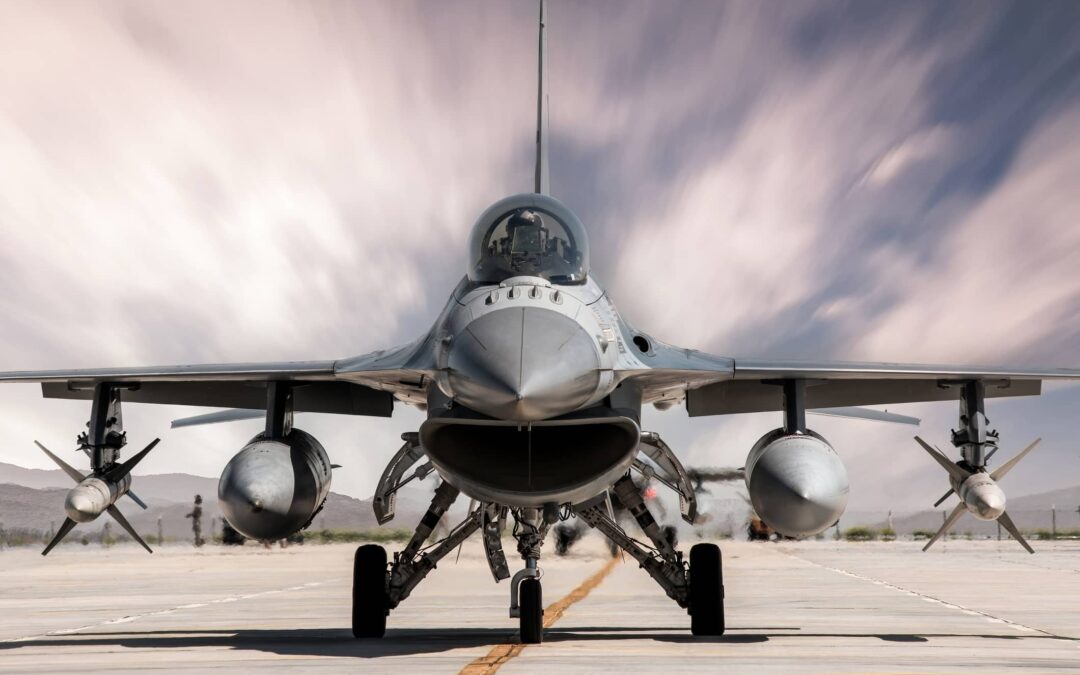
by NMG Aerospace | May 27, 2023 | Uncategorized
Types of Aircraft Industry Goals
Different aircraft types have different purposes and performance requirements, which requires different approaches to the product design process. Understanding the goals and service environments of a specific aircraft type from the very beginning allows designers, engineers, and manufacturers to make confident decisions at every step of the process that support the ultimate purpose and requirements of the project.
Commercial
Reliability plays a key role in the design and manufacture of commercial aircraft. A single commercial aircraft may perform 3,000 landings in a single year, every single one of which must be reliably safe.
Commercial aircraft must also be designed to maximize passenger comfort. The aircraft must be very stable, flying straight level, with very few erratic maneuvers that may frighten passengers or trigger motion sickness. Additionally, commercial aircraft designers often choose to place the fuselage over the wings to make the cabin quieter.
Commercial aircraft may also be designed for fuel efficiency. Even marginal fuel savings on a single flight can translate to massive cost savings across a single day, year, or airline. Major airlines may be highly motivated to purchase aircraft designed for fuel efficiency due to the savings they may realize as a result.
Military
The average military aircraft performs fewer landings per year—perhaps 800 or so—than a commercial aircraft. However, those landings are likely to occur in far more intense conditions and without advanced planning. These aircraft must be designed to protect both the crew and the aircraft in the likely event of a rough landing in rugged, unpredictable conditions.
Stability is less of a priority for military aircraft. Unlike commercial aircraft, military planes do have to perform more intense maneuvers while in flight. In fact, the ability to perform complex maneuvers at high speeds may be a top priority, depending on the aircraft and its purpose. This may include the ability to provide extremely close support for ground troops. This must be considered when designing the aircraft and its controls.
There may also be special functions to consider when designing military aircraft. Some military planes are amphibious and can take off and land on solid ground or water. Others have vertical take-off and landing (VTOL) capabilities for entering and exiting dense terrain with no runway. These special features may affect virtually every part of the aircraft design, which is why understanding these goals from the very beginning is so important.
Meeting Aircraft Design Needs
Aircraft companies have specific criteria in mind when looking for design and manufacturing support. However, these criteria can differ depending on the type of aircraft being manufactured.
Commercial
Production backlogs and delays are an ongoing problem and often a significant source of frustration in the world of commercial aircraft. These companies are often looking for someone who can keep them on track without slowdowns or bottlenecks.
Another top priority for commercial aircraft manufacturers is rapid innovation. These companies are highly motivated to incorporate new technology quickly so they can gain an edge on their competition. They need a manufacturing partner who can support fast-paced innovation, so they can get those new ideas to market as quickly as possible.
Military
Developing a military aircraft often takes longer. Many new technologies and developments may be tested in the process, some of which may be so cutting-edge that they’re being tested and validated for the first time. Plus, because a military aircraft may fly so many varied missions during its service life, its components must be able to withstand a wider range of service conditions. Military aircraft manufacturers seek design and manufacturing partners who can develop components rugged enough for their planes.
Aviation Manufacturing & Machining From NMG
NMG Aerospace has the expertise, experience, and manufacturing and machining capabilities to support the different performance goals of the commercial and military aircraft industries. We seek to understand your goals and requirements from the very beginning, so we can offer design, engineering, and manufacturing support that leads to a successful final product. Our experts can tailor our approach based on your performance goals, whether that’s the stability and fuel efficiency of a commercial aircraft or the incredible maneuverability of a military plane. We make it our goal to understand your priorities from the very beginning, so you can count on the best possible guidance from initial design to final quality testing.
To learn more about our design support services, talk to a member of our team >
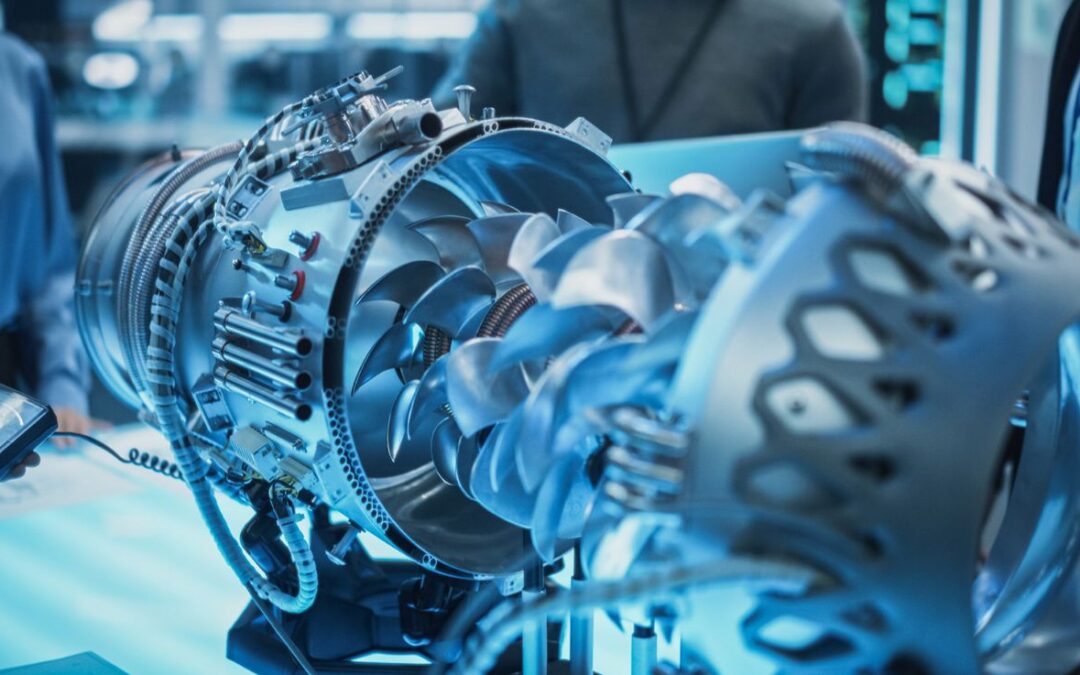
by NMG Aerospace | May 20, 2023 | Uncategorized
Importance of Aerospace Quality Testing
Quality testing is often the final step of the product development process before launch. The data gathered during the quality testing process can help determine whether the product can withstand its service environment and perform as designed, even in harsh conditions. This is critical for designing and manufacturing a reliable aerospace product.
Additionally, quality testing is often vital for doing business in the aerospace industry. Many aircraft manufacturers will only purchase components that comply with certain aerospace quality standards, such as industry standards or their own custom specifications. Investing in comprehensive quality testing demonstrates commitment to producing quality products and can bolster a manufacturer’s reputation in the industry.
Quality Testing Processes for Aerospace Parts
Because every aerospace component has a unique and specialized role, the quality testing process will look different depending on the product being tested.
The first step to the quality testing process is to determine whether there are any specific compliance tests that need to be considered. For example, BMS 13-48 is a Boeing spec that should be considered when assessing the quality of wire and cable, and Boeing Safety Standard (BSS) 7239 might be important when testing coating, textiles, and composites. These tests are often mandated by specific manufacturers or larger governing bodies as a way to establish consistent quality standards throughout the industry and are especially vital when conducting quality testing before a product launch.
The next step is to understand what the client is seeking to achieve. Are they in the research and development (R&D) stage for a new product or seeking to learn something highly specific about a certain component? Understanding the client’s goals is vital to designing an effective aerospace quality testing plan.
The quality testing team should also endeavor to understand the product’s service environment. Aerospace components often operate in fairly extreme conditions, and quality testing can be incredibly valuable in determining whether a given component can operate as designed while withstanding an intense environment.
Once the necessary tests have been chosen, the testing team can determine the most sensible order of tests and complete any preparations that must take place before testing can start.
At this point, the testing team can execute the quality testing plan. As previously stated, the actual testing process may be very different from one component to another. A component located on the exterior of the aircraft will be subjected to very different laboratory conditions than a component that’s part of an interior system.
Data is collected throughout the quality testing process. Once testing is complete, that data can be gathered for review and analysis. Interpreting the results determines whether the component fulfilled the testing requirements and any next steps that must occur.
In some cases, completion of testing is the final task before going to market. But, depending on the goals of testing and the development stage of the product, testing data may serve as a guidepost for next steps. For example, the product may need to be refined, and the testing data can offer insight into the refinement strategy. Or data can help a manufacturer decide between multiple materials or products, so they can move forward with the stronger contender. Either way, determining what to do after testing is complete is an important part of the quality testing process.
Quality Assurance From NMG
With years of experience and deep industry insight, NMG is proud to offer a robust portfolio of quality testing services for aerospace components, products, and systems. Our testing experts can design a testing protocol that combines relevant industry standards with our insights into the additional data that will help you bring your product and your go-to-market strategy to the next level. From standardized test procedures to custom test programs, NMG has the in-house expertise and capabilities to support all of your aerospace quality testing needs.
To learn more about our testing capabilities, talk to a member of our team >
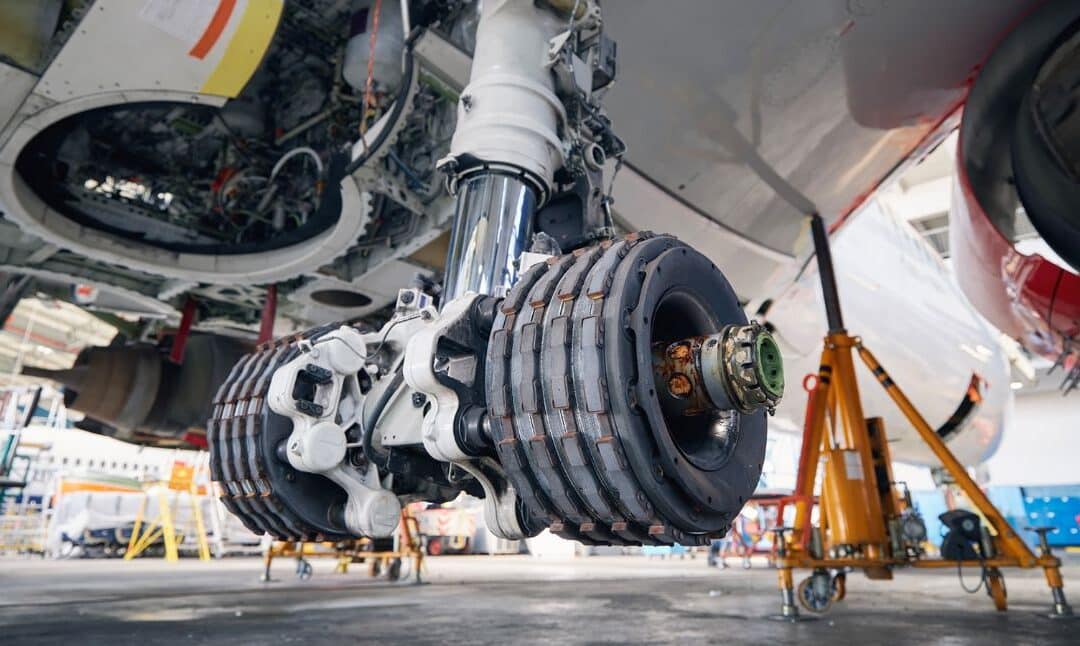
by NMG Aerospace | May 1, 2023 | Uncategorized
Aerospace engineering is an increasingly popular career path. With so many advancements in aerospace technology, from unmanned aircraft to space travel, there are many new and exciting opportunities for professionals to pursue. Employment in the aerospace industry is growing steadily at a rate of 6% every year. In addition, the aerospace engineering field offers competitive salaries and the chance to play a role in bringing innovative, cutting-edge technology to life.
Aerospace Engineering Career Path
Aerospace engineering can be a fairly competitive field. However, if you are an aspiring aerospace engineer, you can take early steps toward a successful career path. Strategies include focusing on math and science coursework, seeking internship and co-op experiences, and considering a master’s degree in the future.
Math & Science Centered Schooling
Education is the first step toward a successful career in aerospace engineering. Aspiring aerospace engineers can take the first steps by focusing on chemistry, physics, and mathematics coursework as early as high school. Math is especially important in any type of engineering, and working hard in high school can pave the way for you to take even more advanced math classes once you reach college.
Once you enter higher education, you should pursue degrees in engineering or a related field. Additional coursework in chemistry, physics, and math at the collegiate level is also highly beneficial since those skills will support their core curriculum and likely come in handy in the future. You might also consider taking a few courses in computer science and software engineering, since the skills taught in these courses may also benefit their career aspirations.
Internships & Co-op Experiences
Co-ops have been part of the engineering experience for over one hundred years. Co-ops are an excellent opportunity to learn on-the-job skills, such as communication, client management, relationship building, problem-solving, and other skills that can’t be learned in a classroom. Spending time in an active work environment gives you a chance to learn how people use the products, how to market different products, and how to apply engineering fundamentals to real-world problems. And while not all co-op experiences lead to job offers, it’s not uncommon for co-op students to become employees at the same company after graduation.
Consider a Master’s Degree
Not every aerospace engineering job requires a master’s degree. Many engineers go their entire careers with just a bachelor’s degree and enjoy great success. However, there are some roles that do require an advanced degree, specifically a Master of Science in Aerospace Engineering (MSAE). If you have aspirations of leadership and advanced technical roles, a master’s degree can be extremely beneficial.
Some colleges and universities offer five- or six-year programs that combine a bachelor’s and master’s degree into one streamlined program. This allows young professionals to enter the workforce having already earned an advanced degree, which can open up more job opportunities for them as they begin their careers. That being said, plenty of aerospace engineers choose to go back to school later in life to earn their master’s degree.
Job Growth for Aerospace Engineers
As previously stated, the job market for aerospace engineers is expected to grow by 6% every year, with new opportunities appearing all the time. And there is no single path forward for someone interested in a career in aerospace engineering. An aerospace engineering professional can explore countless possibilities, including:
- Designing aircraft and spacecraft.
- Designing the parts, components, and systems within an aircraft as a mechanical engineer.
- Building blueprints and technical schematics as a drafter.
- Leading teams of engineers and support staff.
- Working directly with customers in a sales or business development role.
- Teaching aerospace engineering to college, university, and grad school students as a professor.
There are so many different jobs for aerospace engineers, all of which allow you to pair your passion for aerospace engineering with other talents and interests.
It’s also worth noting that there are multiple fields within the aerospace engineering industry that person may be interested in. In addition to commercial aircraft, there are robust sectors for military aircraft, private aircraft, and space exploration, along with academia.
Growth and Experience With NMG
NMG Aerospace has worked incredibly hard to cultivate a work environment where everyone can thrive. We have invested considerable energy and resources into creating a workplace culture where each and every one of our employees feels supported and motivated to do their best.
We provide all of the standard employee benefits, such as paid holidays and time off, a 401k plan, full medical, dental, vision, and prescription benefits, and short- and long-term disability. But we’ve added additional benefits over the years to meet the changing needs of the American worker, including:
- Flexible schedule options.
- Reimbursements for safe, workplace-appropriate shoes and prescription safety eyewear.
- Leadership development programs and other workplace learning opportunities.
- Tuition assistance.
- Multiple healthcare expense support options, include a flexible spending account (FSA), health savings account (HSA), and an annual wellness reimbursement allowance.
- Employee events, activities, and free tickets.
We also understand that starting a new job, even your dream job, can be stressful and overwhelming. All of our new hires go through a carefully curated onboarding experience that’s designed to make the transition as smooth as possible. The process includes comprehensive safety and quality orientations, continuous improvement training, and opportunities to connect with and befriend their new colleagues right away. New hires are also assigned a workplace mentor or “buddy,” someone they can turn to with questions as they learn the ropes.
NMG Aerospace believes strongly that excellent work begins with excellent employees who feel empowered to bring their best every single day. We’re always looking for new team members who share our passion for aerospace engineering and want to join the NMG family. To learn more about what we offer our valued employees, check out our benefits >
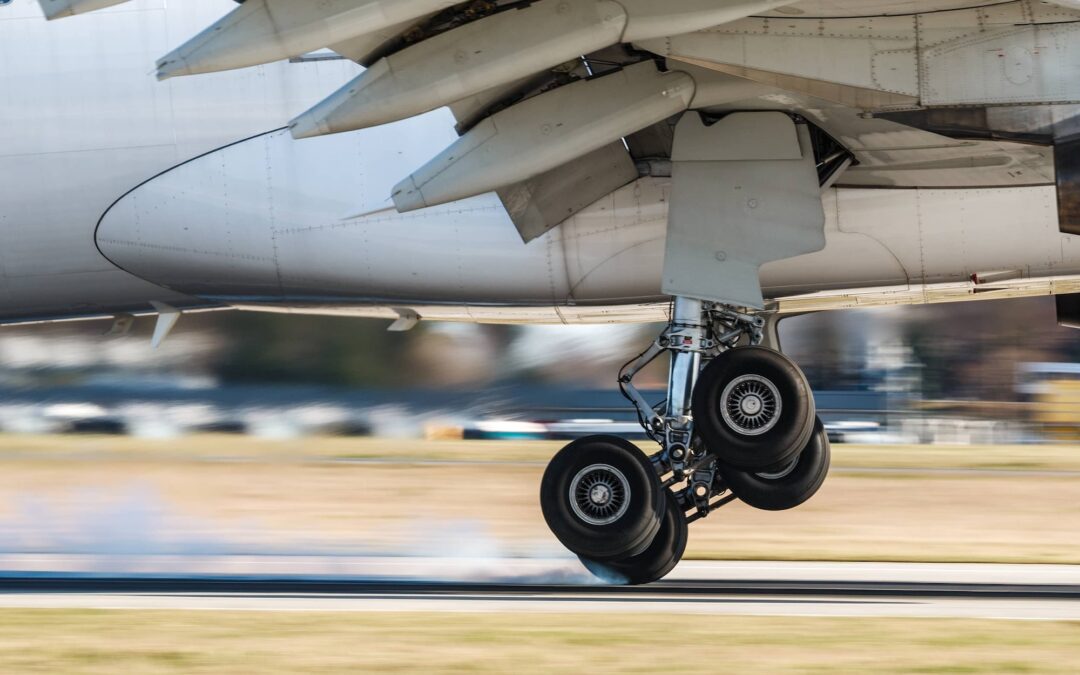
by NMG Aerospace | Apr 24, 2023 | Uncategorized
How Landing Gear Works
Landing gear is the only part of the aircraft that makes contact with the ground and supports the weight of the craft when the plane is not in flight. Whether the plane is at rest, taxiing, turning, or accelerating for takeoff, the landing gear is responsible for transmitting those forces between the aircraft and the ground.
Well-designed landing gear is critical to safe takeoff and landing. Landing gear must be designed for exact balance, so the plane can tilt slightly for takeoff without the tail striking against the surface of the runway.
The tires and wheels must withstand the same pressures as a standard automotive tire: bumps, loads, cornering, and other forces.
Landing Gear Design Process
Some aircraft manufacturers make the mistake of waiting until late in the process to begin designing the landing gear. Because the design and integration of the landing gear affects the entire aircraft, waiting too long to think about landing gear is a mistake—and can necessitate a large-scale redesign. The structure of the landing gear must be able to bear the load of the plane, and the plane itself must be built to include space for the landing gear to be stored while in flight.
Client Goals
It’s important to start with a conversation about the overall design of the plane, as well as considerations such as performance and safety requirements, timeframe, technology, resources, and budget. These factors may affect material and design choices.
Choosing Configuration
Aircraft manufacturers may have multiple landing gear configurations to choose from. Some options are lighter than others, some offer better on-the-ground visibility to the pilot, and others are better suited to different types of landing surfaces, such as groomed runways versus field environments. The right choice depends on the purpose of the plane and where it will be used. In any case, it is vital to choose a configuration that offers stability and equilibrium.
Meeting Specifications
Each type of aircraft may be required to meet different specifications and regulatory requirements. It is crucial to understand which specifications must be considered when designing landing gear.
Analysis, Testing, & Qualification
Today’s testing technology allows manufacturers and designers to use models and real-world tests to recreate stress, fatigue, and other forces in a controlled environment. This allows for careful analysis of each component of the landing gear to ensure that it can withstand its environment and perform as expected. Designers should be mindful to include time for analysis, testing, and qualification in the design timeline.
Design Factors to Consider
There are several important variables to consider when designing landing gear for aircraft of any size and variety. Landing gear is subjected to a variety of forces while in service, and understanding these forces is key to designing an effective landing gear assembly.
Load Weight During Landing
Of course, aircraft landing gear must support the weight of the plane while taxiing and while at rest. However, the landing gear must also be able to withstand much greater loads and pressures while the aircraft is actually landing. Bumps and other hazards on the landing surface also add additional load to the landing gear.
Side Loads
It is vital to design a landing gear structure strong enough to withstand side loads. A side load is any pressure placed on the aircraft’s wheels and landing gear from the side due to cornering, turning, or crosswinds. This largely depends on where the plane will be used. Side loads put a lot of pressure on the joint where the landing gear attaches to the aircraft and may even cause bending.
Landing Distance
Landing distance is an important factor to consider when designing landing gear. For example, an aircraft that will land on aircraft carriers needs landing gear that can withstand a firm, swift, short-field landing, rather than the slow, gentle descent of a commercial aircraft landing on a long, paved runway.
Aircraft Manufacturing from NMG
NMG Aerospace has spent decades refining our landing gear manufacturing methods for efficiency and precision. Every single member of our team is an expert on lean manufacturing, which translates to faster delivery of top-quality parts made exactly to spec that work seamlessly once assembled. We design exceptionally streamlined manufacturing processes that make each component we produce as economical as possible, saving time, cost, and other resources.
NMG has years of experience manufacturing high quality landing gear components based on exacting specifications. To learn more about our manufacturing methods and how we can serve you, talk to a member of our team >












